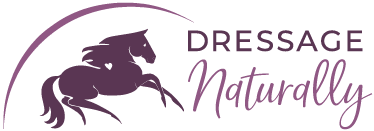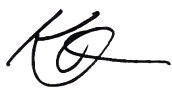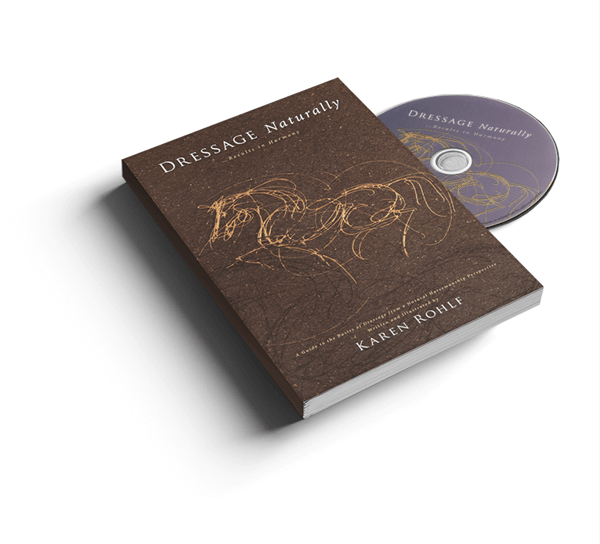"Horses are not merely lumps of clay
where strongly squeezing and pressing on them will make them soft"
Many people tell me they "struggle with their bracey horse". The first step is to stop labeling the horse as bracey. Step two is to replace struggling with curiosity about the cause of the brace.
That may seem obvious, but so often the brace is looked at as a character flaw or a behavior issue. It can feel like the horse is willfully deciding to go against the rider and the rider feels she must teach the horse to yield to or obey her suggestion. In this case, the brace is seen as purely an issue of submission. Sometimes horses are described as 'feeling like a 2 by 4', and the solution seems to require the manipulation and force of the body to move in the ways it is already resisting moving. The trouble is, horses are not merely lumps of clay where strongly squeezing and pressing on them will make them soft.
Dissolving brace is a matter of balance and trust.
"Dissolving brace is a matter of balance and trust."
The key to eliminating braces is:
1) To see brace as a complex issue with many possible causes.
2) To dissolve the brace by eliminating the causes.
3) To take responsibility for your role in creating the brace in the first place. Tango isn't the only thing that it takes two to do.
"Tango isn't the only thing that it takes two to do."

What Is Brace?
The general definition of brace is:
- To prepare (oneself) for something difficult or unpleasant.
- To tense the muscles (in one's body) to stay stiffly in a certain position.
Applying this to horses, it makes sense that to eliminate brace we must make things less unpleasant, and not make it a requirement for the horse to stay in a certain position.
If you seek to make things more pleasant in general and adopt a more playful way of achieving the postures you want, you will already be addressing two of the main reasons for brace. From there we need to get more specific.
You can get this image on a Tshirt, sweatshirt, pillow or mug! Go to DN Merch shop
Why Do Horses Brace?
A brace can feel like your horse saying 'No' to your request. Instead of being personally insulted, we need to ask why. Bracing is a defense mechanism. Why does our horse feel the need to protect himself? What is he protecting himself from? There can be many reasons.
- Lack Of Clarity (Mental brace): The horse could be confused and unsure about what to do. This could cause resistance to being pushed to do something when he isn't sure what he is supposed to do. As you might imagine, fear of punishment or stronger aids in this moment will make things worse.
- Lack Of Balance (Physical Brace): There will always be room for improvement in balance. Even small imbalances will cause a brace somewhere in the body. If one part is falling over, another part needs to hold on to counterbalance. Imbalance can be within the horse's body, or our own bodies as we sit on the horse. There can also be a lack of balance between horse and rider.
- Fear (Emotional Brace): If the horse is afraid, you are going to have to address that first. You will need to be patient and trustworthy. How do you feel when someone impatiently tells you to 'just relax' when you are upset? How would you feel in your body if someone was pushing you to do something you were afraid to do? If you have a good partnership with your horse and he is only slightly anxious, there may be things you can ask him to do that will help dissipate his fear. You don't have to stop all movement, but don't make the mistake of merely forcing your horse to physically submit to your control. He may give you his body, but the emotional damage done can go deep.
- Lack of Motivation (Emotional Brace): Lightness and self-carriage are easier when a horse is naturally animated, engaged, and keen. If a horse knows what to do and wants to do it, there will be less need for him to lean on you and less need for you to physically pressure him.
- Lack of Skill (Physical Brace): Horses can brace when asked to do something they don't have the strength, stamina, or coordination for. Getting specific about what skill the horse needs to practice is the first step in solving it. Ideally, training is a gradual progression where one skill builds upon another.
Now let's get specific with the most common area of brace and how to melt it away.
Brace In The Reins
Of all the braces riders complain about, brace in the reins is likely the most common. It is the reason for the creation of many strong bits and other leveraged apparatus designed to try to get horses to stop putting so much pressure on the reins.
Connecting human hands (which are built to grab things),
to a piece of metal in the most sensitive part of the horse (the mouth and tongue),
which is connected to the most delicate and highly innervated joint in the horse's body (the Tempero-mandibular joint),
at the end of the most flexible part of the horse (the neck) - is a recipe for brace.
Some people will think: 'If these are such delicate structures, why would the horse lean so much on the bit?' If you think about brace as a defensive behavior, it makes perfect sense.
Imagine you are wearing hoop earrings and someone reaches up and grabs one of them... I am willing to bet that even just thinking about this made you tense up your neck and shoulders.
We also need to remember that although bits cause their fair share of problems, all problems of the body will show up in the reins when riding in connection with the reins. To solve brace in the reins you must take in the whole picture, and solve the brace by eliminating all the reasons that feed into the brace. Using your reins for as few things as possible is a great way to start. (go here for a blog that talks about the purpose of the reins)
It is an artful process, and too many times horses that are strong in the contact are subjected to stronger and stronger bits and increasingly restrictive equipment such as draw reins.
Dissolving Brace
Eliminating brace is NOT about submitting to control. I have seen horses have their heads tied with their nose on their stirrup and left for hours to 'teach them to give to the bend'. I have seen horses tied with their heads up high to 'teach them to 'relax their necks'. There are nosebands with sharp edges, bits made of bicycle chains, and even more horrible practices out there. All of these deal with the wrong end of the problem. They either create more defensive behavior, or cause horses to just give up - not out of education into lightness, but out of the heaviness of hopelessness.

Eliminating brace is about building trust and balance. It is about inviting the horse to open very small doors. When a horse braces, instead of thinking they need to give me more, I think about asking for less. When I'm talking to the head and neck, I will focus on doing 'micro yields' where I build the horse's trust: I promise him that when he gives, I won't take. For example, I can put just the tiniest amount of pressure on the rein and if he blocks or braces, I just wait there. I don't ask for more. An observer may not see anything happening. I just wait and send the message: 'you're OK, I'm not going to take anything'. When he dares to relax his defense system I take my hand away.
The more he trusts me, the more quickly he will let go of the brace and open that small door, and eventually the door will be open from the first touch. From there we can progressively increase the degree of movement expected, but if the horse is holding the door shut it and saying "no", it doesn't matter if I am able to physically put his body there through force; he's still bracing on the inside and will likely try to protect himself more the next time. If we build balance and trust, the horse will walk through the doorway of our suggestion more and more easily over time.
If a horse being ridden is defensive about giving a little lateral flexion, how does it make sense that asking for even more would be helpful? If he felt like he had to protect himself against a little, he will protect himself more if he thinks the rider is going to take a lot. If you're looking for your horse to become open, look for the very small doors and invite your horse to open them.
So many people will call their horse stiff or like a board, but one second later this same horse reaches back and scratches an itch on his back leg or his side with ease. Brace is so much about trust.
It's Not You, It's Me
I have a powerful simulation where students experience feeling each other through the reins. When I demonstrate it, I tell my partner to 'be a bracey horse'. They pull and tug on the reins, and at first I hold against it and we become, in a way, balanced in our bracey tension. In that moment, if someone cut the reins we would both lose our balance, so we are stuck there together. Neither one of us is enjoying it, but we have no way out. Anyone who as been told to 'let go of the inside rein' when it feels impossible because their horse is seemingly grabbing it can relate to this situation.
In the next stage of the simulation I tell my partner to brace on me, but I make some changes in my mind and body and pretty quickly the reins become soft. I say to them: "I told you to brace on me" and they start pulling on the reins, but quickly stand there with a soft rein looking at me perplexed. "There's nothing to brace against" they say.
So what do I change to make them not brace against me?
(in no particular order):
- I smile at them and send happy energy to them
- I come into my own balance
- I think: "You can lean as much as you want you just can't get me off balance" (instead of thinking: "You can't have this" or "Gimme those reins"
We play around with different degrees of contact, and even with a fairly strong pressure it can feel positive and unbracey if I stay in my own balance and friendly.
When we have a nice un-braced connection, I have them close their eyes. I let them know I am going to slowly change things and I want them to tell me when they first start to feel a brace. I change those 3 things above to the opposite: I grimace, I allow them to pull me off balance and I think: "Gimme those reins - you can't have them!".
Often the person will say they feel the brace at the very first moment I change any one of those things. Bottom line: If they tried to be bracey, I could cause them to be soft. If they wanted to be soft, I could cause them to brace simply by changing my end of the connection.
So yes, some horses have developed patterns of bracing and even a ''perfect" rider will feel it, but it will more quickly dissolve when we focus on balance and trust. My first thought when I feel bracing is to make sure I am not giving the horse a reason to brace, and ultimately, how I can be a reason to dissolve the brace.
Below is a short excerpt from a full-length video of the Dissolving Brace simulation. The full video can be found in the Video Classroom - Oct 2011: Connection With The Reins, Dissolving Brace.
The Power Of Kindness
The more decades of experience I gain, the more I am convinced of the power of kindness. Training horses is a little about technique, and a lot about the mindset with which it is delivered. Likely some of you reading this are nodding in agreement and perhaps even whispering a little: 'Amen' under your breath. Others of you may be thinking, 'Yeah, but what about the horse that just tanks through everything and pushes everyone around?'
The establishment of boundaries has a role in rehabilitating horses who brace. I put this in the balance category since balance is the key to self-carriage. There is mental, emotional, and physical self-carriage, and all of those need to be addressed when dissolving brace. (You can go here to read a blog on self-carriage)
Often it is the clarification of 'hey, you stay over there and I'll stay over here' that prevents us from getting tangled up in the bracey system. It's important to have some 'rules' and make sure the horse understands them. This is the beginning of self-carriage and is an important piece in eliminating brace. I do this with spatial boundaries on the ground. While riding, I teach the horse responsibility for line of direction and stopping without needing the reins. Teaching horses simple rules for where they are going with their bodies is a foundational lesson that can eliminate a lot of causes of brace. Clarity can be kindness. So many riders who struggle with brace can be a little sloppy and less clear with the basics, but then they argue with their horse over more sophisticated or advanced communication. Taking the time to make the easy things easier will make the harder things easier, too.
Once those boundaries are clarified through education, I have found that improving how my horse feels about my touch is incredibly powerful. My Moving Massage technique is where I am moving with my horse and touching him purely with the intention of love and kindness. If I find areas of tension, I stay there with the message of: 'can you release that?' I am not asking for anything from them or of them, but simply wanting them to see my touch NOT as something that is demanding or taking, but as something that is helpful. I want them to feel better after my touch the way I feel better after a massage. It is an exercise that can really change everything, as it changes the relationship I have with my horse.
Below is a short excerpt from one of several videos about Moving Massage. For more, go to the Video Classroom - Search for Moving Massage.
To Sum Up
Remember to see brace as a complex issue with many possible causes. Take responsibility for your role in creating or perpetuating the brace.
Make being with you more pleasant, and don't make your horse to stay in a fixed position.
Dissolving brace is about Balance & Trust.
Dissolving brace is about mental, emotional, and physical self-carriage.
Dissolving brace is about inviting your horse to open the very small doors he is holding shut, and not using that open door to go in and take something from him.
It takes two to tango, and it takes two to brace. Change your balance, your attitude, and your technique, and you have a chance to really dance together.

I hope this helps.
Let me know! Add a comment below.





